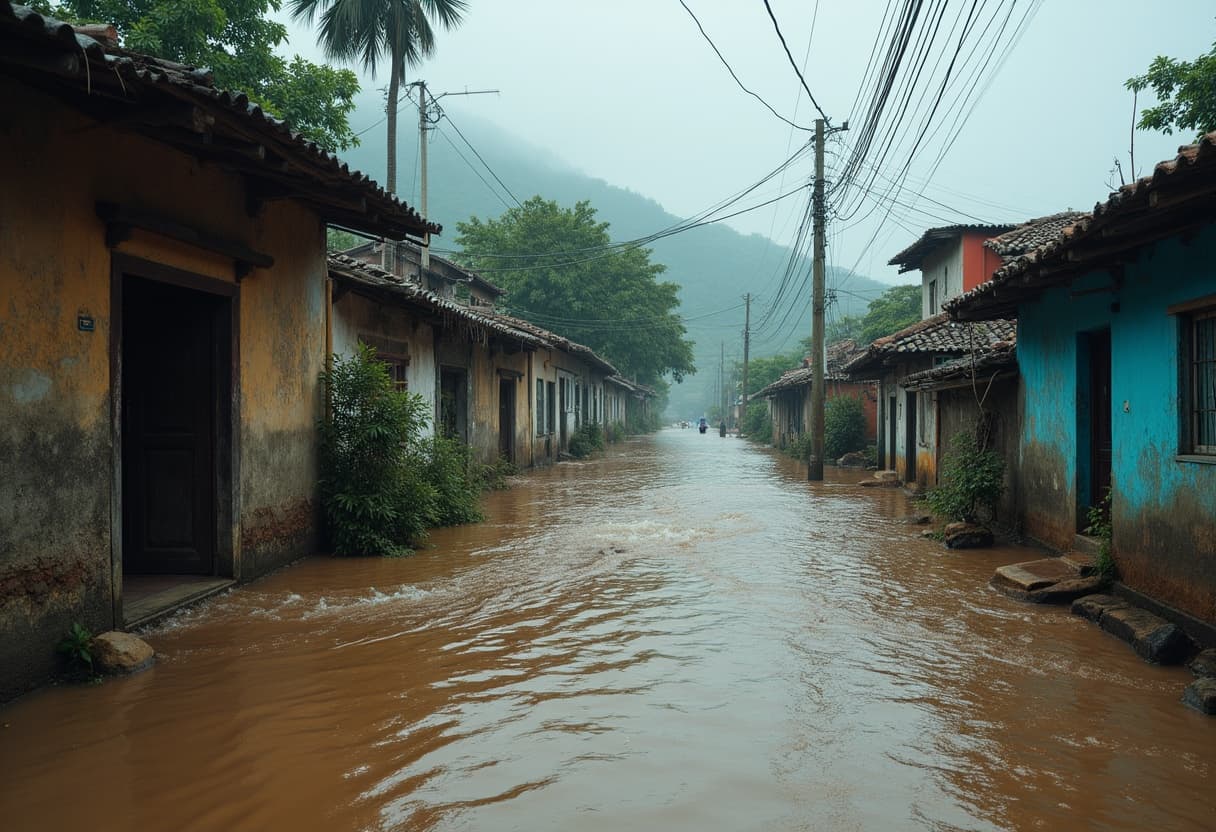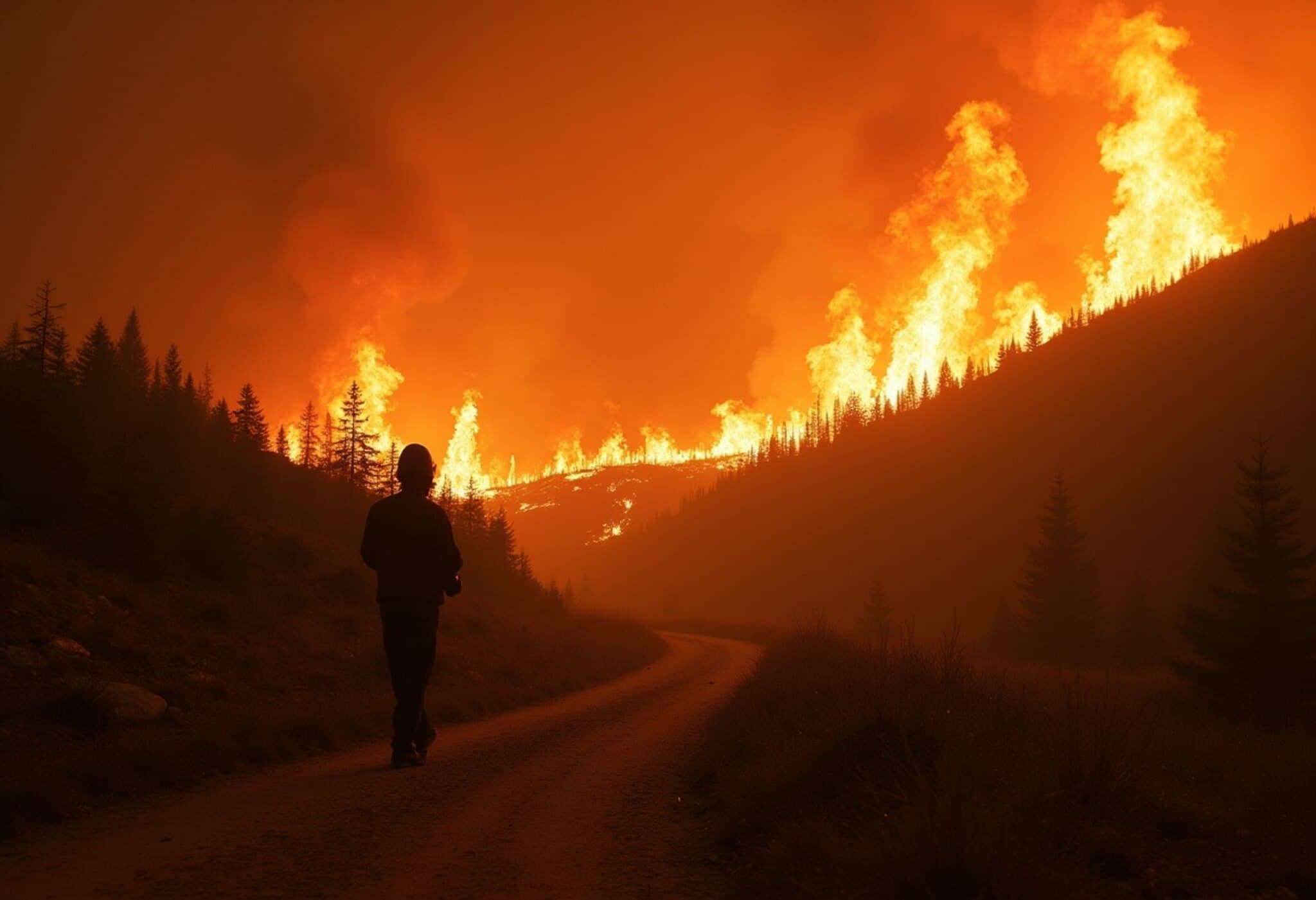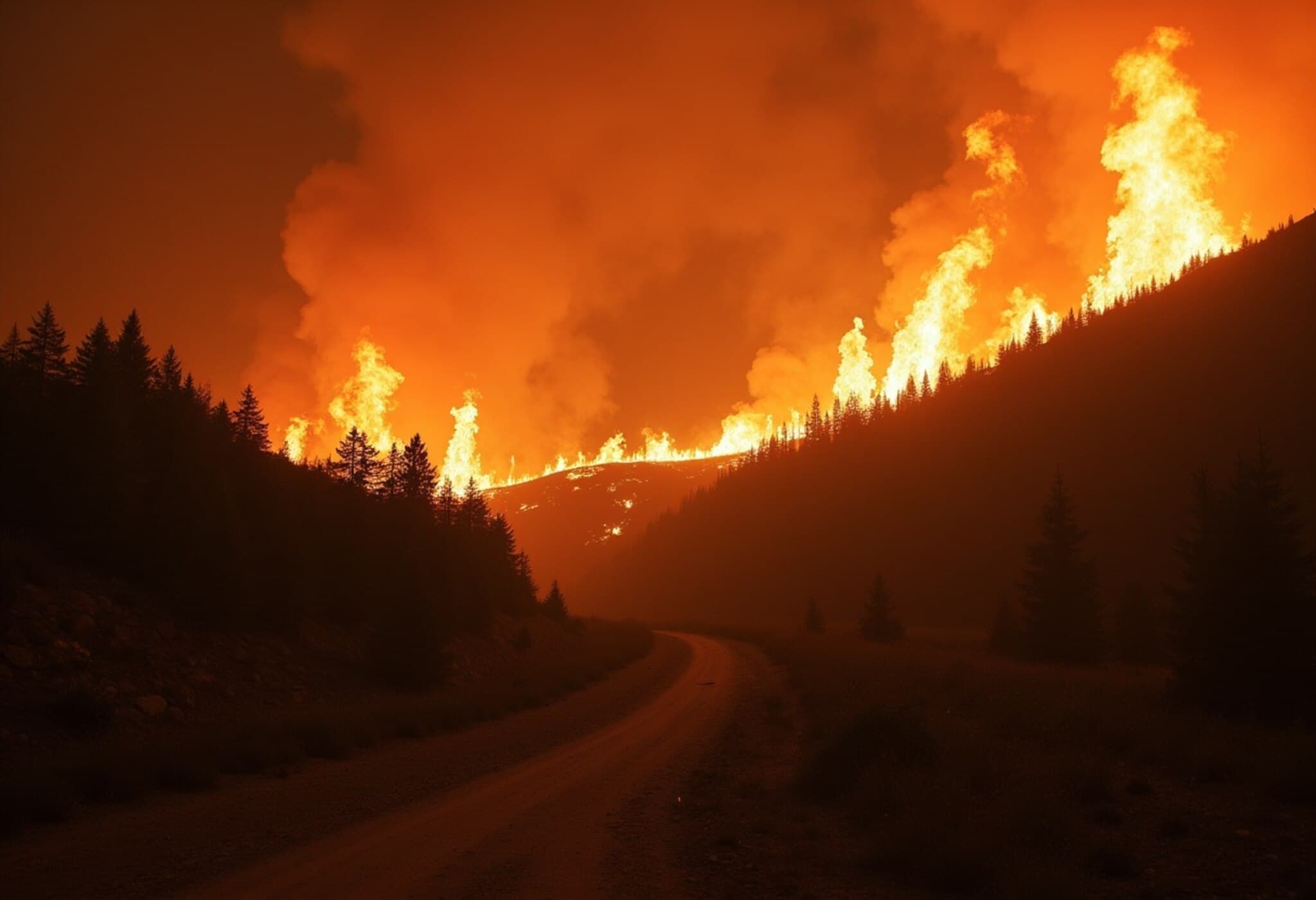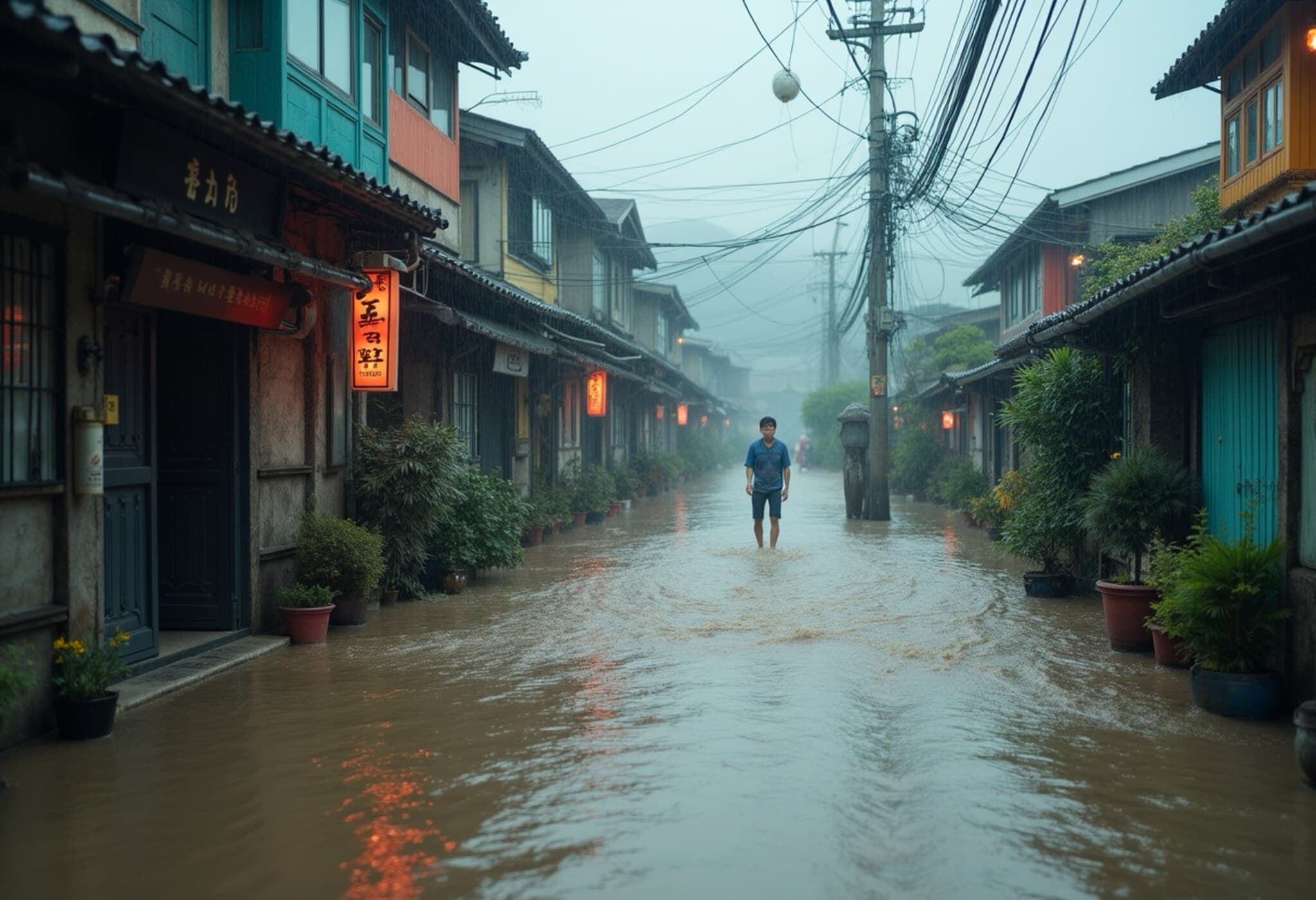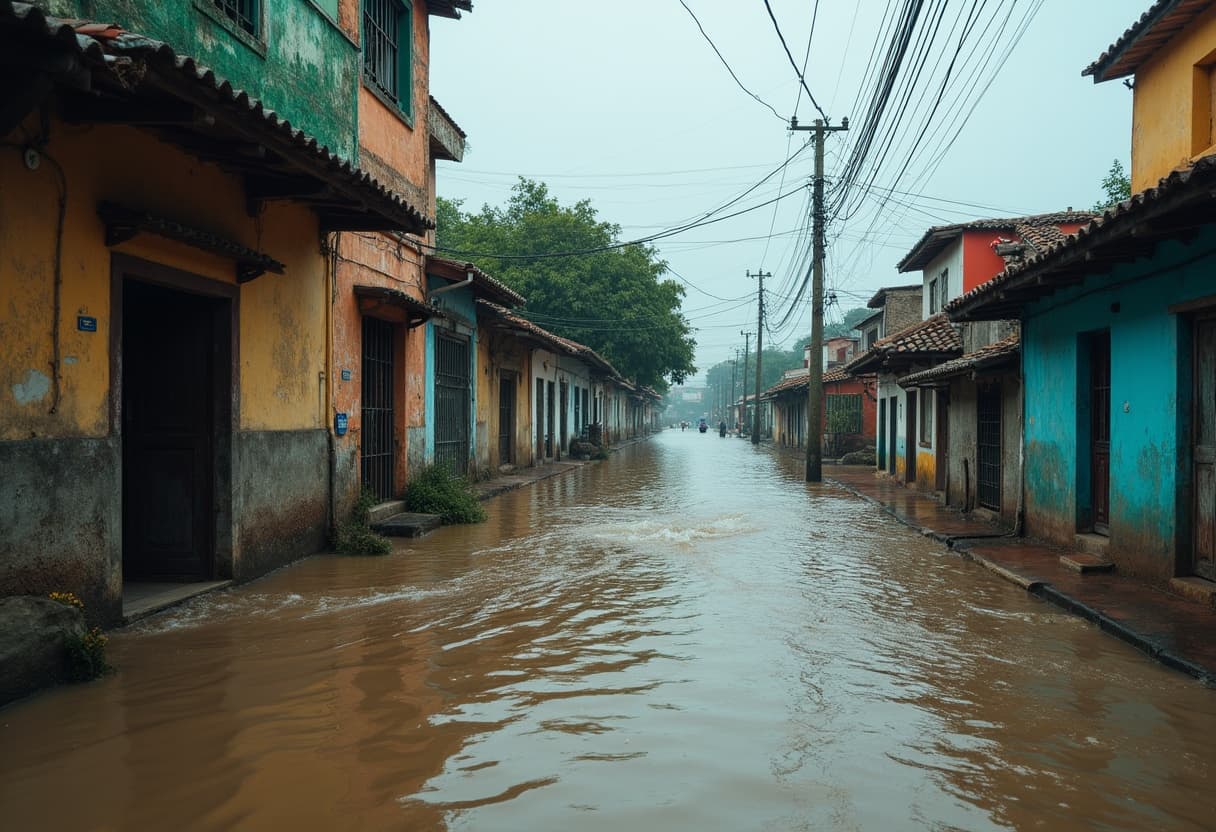Catastrophic Flooding in Mexico Leaves Death and Devastation
In the aftermath of an unprecedented weather calamity, Mexican authorities are grappling with a growing humanitarian crisis. Torrential rains unleashed over the weekend have triggered deadly floods and landslides across five eastern and central Mexican states, leaving at least 64 people dead and 65 missing, officials reported on Monday.
States Most Affected: Veracruz, Hidalgo, San Luis Potosí, Querétaro, and Puebla
The violent downpours overwhelmed rivers and destabilized hillsides, devastating communities unprepared for such a sudden deluge. Local governments confirmed that some areas received up to 20 inches of rain within just four days. Entire neighborhoods remain isolated by floodwaters and debris, with around 100,000 homes damaged or destroyed, according to President Claudia Sheinbaum.
President Sheinbaum acknowledged the unprecedented nature of the rains: “There were no scientific or meteorological conditions that could have indicated to us that the rainfall would be of this magnitude,” she stated during a press briefing.
Human Toll and Urgent Response
Rescue teams continue to reach cut-off areas, combing through mud and wreckage in search of survivors. In Veracruz alone, an overflowing river displaced thousands and accounted for at least 29 deaths. On the ground, frustration simmers among residents urgently demanding answers and assistance.
During a visit to the hardest-hit town of Poza Rica, President Sheinbaum faced a crowd of anxious citizens holding photos of missing loved ones. A student, speaking passionately, asked, “What good is it to have you here?” capturing a universal feeling of desperation amid the chaos.
Despite these tensions, the administration promises comprehensive aid. President Sheinbaum emphasized, "There are sufficient resources. There will be no skimping on that." Her government reportedly has nearly $867 million earmarked for disaster relief in 2025.
Challenges in Disaster Management
This crisis arrives amid structural challenges in Mexico’s disaster response framework. The federal government’s specialized disaster relief fund was dismantled recently due to corruption allegations, complicating rapid resource deployment. Although no direct legal cases have proved fund misuse, its absence leaves a critical gap.
In place of this fund, Mexico’s armed forces have shouldered an expanding role in emergency relief. While praised for swift action after catastrophic events like Hurricane Otis in 2023, critics note that military-led efforts sometimes lack nuanced local knowledge essential for effective recovery and rebuilding.
Expert Analysis: Climate Change and Mexico's Weather Extremes
Meteorologists emphasize that while it is challenging to attribute any single storm directly to climate change, the broader pattern of increased rainfall intensity aligns with global warming trends. Warmer air holds more moisture, leading to potentially more severe localized downpours.
Mexico’s varied topography and expanding urban zones increase vulnerability, as heavy rains can quickly overwhelm aging infrastructure and poorly planned developments.
Government Plans for Recovery and Mitigation
Looking forward, President Sheinbaum vowed to strengthen flood defenses, including:
- Dredging rivers to improve flow
- Building embankments and flood barriers
- Rebuilding bridges and upgrading pumping stations
Moreover, health officials are mobilized to curb potential outbreaks of mosquito-borne diseases such as dengue, which often follow flooding.
Power outages impacted over a quarter million people, though service was largely restored within days.
The Broader Context: Mexico’s Vulnerability to Natural Disasters
Mexico faces a dual challenge of recurrent natural disasters compounded by socioeconomic inequalities. Flooding incidents earlier this year along the U.S.-Mexico border also caused fatalities and extensive damage, underscoring a worsening trend.
Experts assert that proactive urban planning, investment in resilient infrastructure, and transparent, accountable disaster funds are essential for minimizing human and economic losses.
Editor’s Note
This tragic flood event prompts urgent questions about preparedness and resilience in Mexico’s rapidly urbanizing regions. How can policymakers balance short-term emergency response with long-term infrastructure solutions? What role should transparency and anti-corruption measures play in disaster funding? And crucially, how will climate change shape Mexico’s vulnerability in future hurricane seasons?
Continued monitoring and expert engagement will be vital as this story develops.

